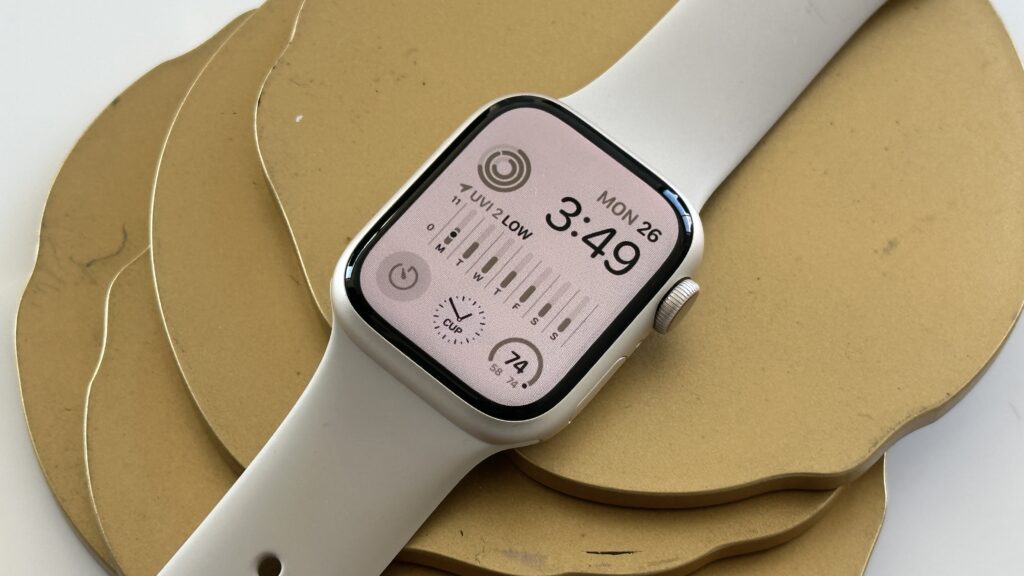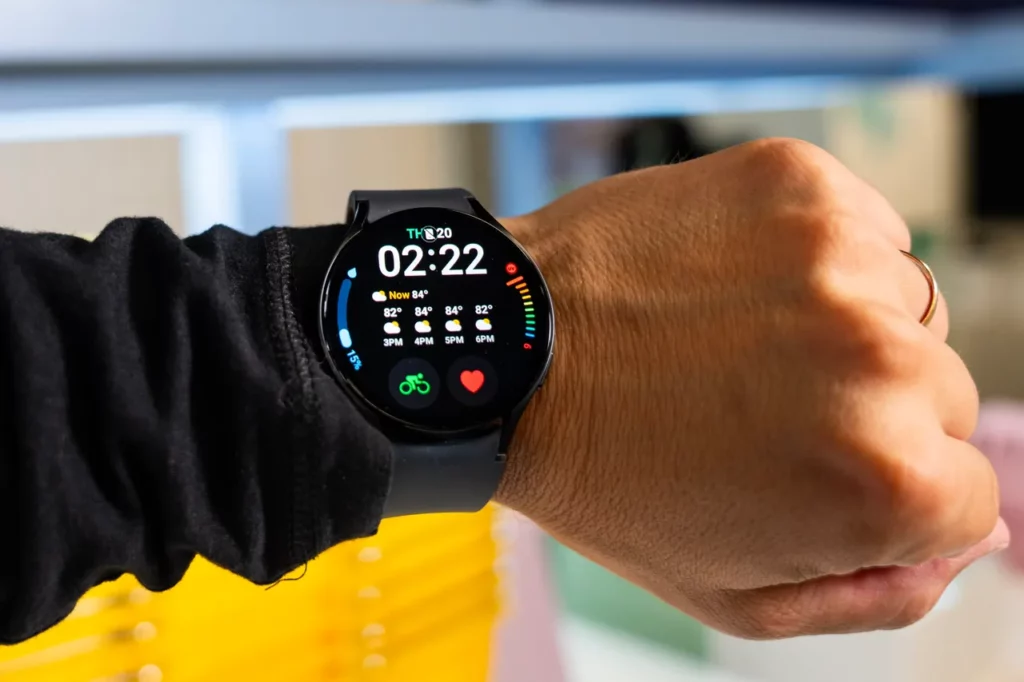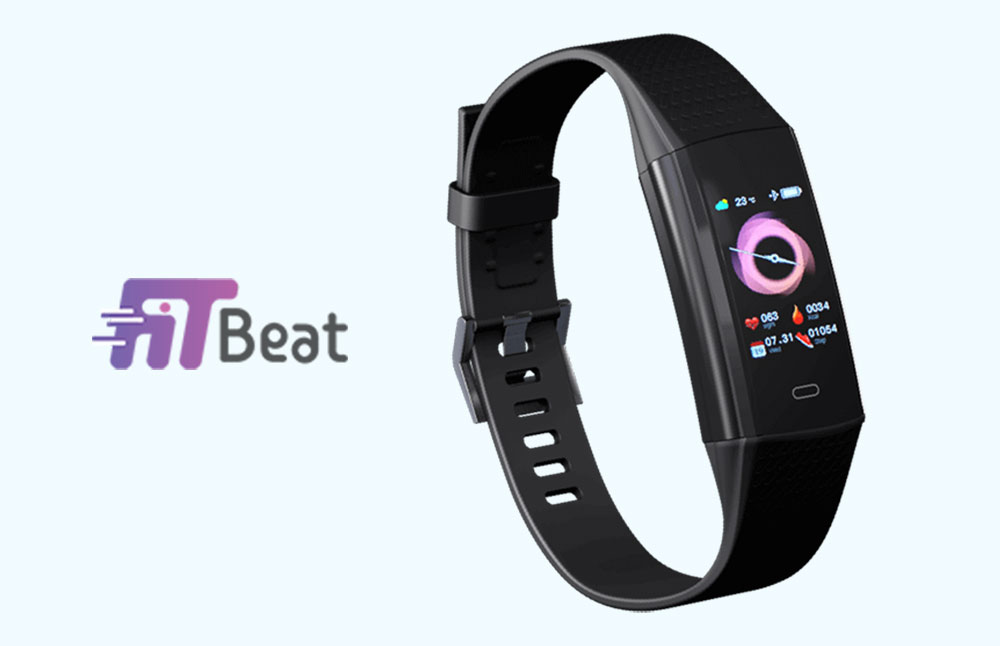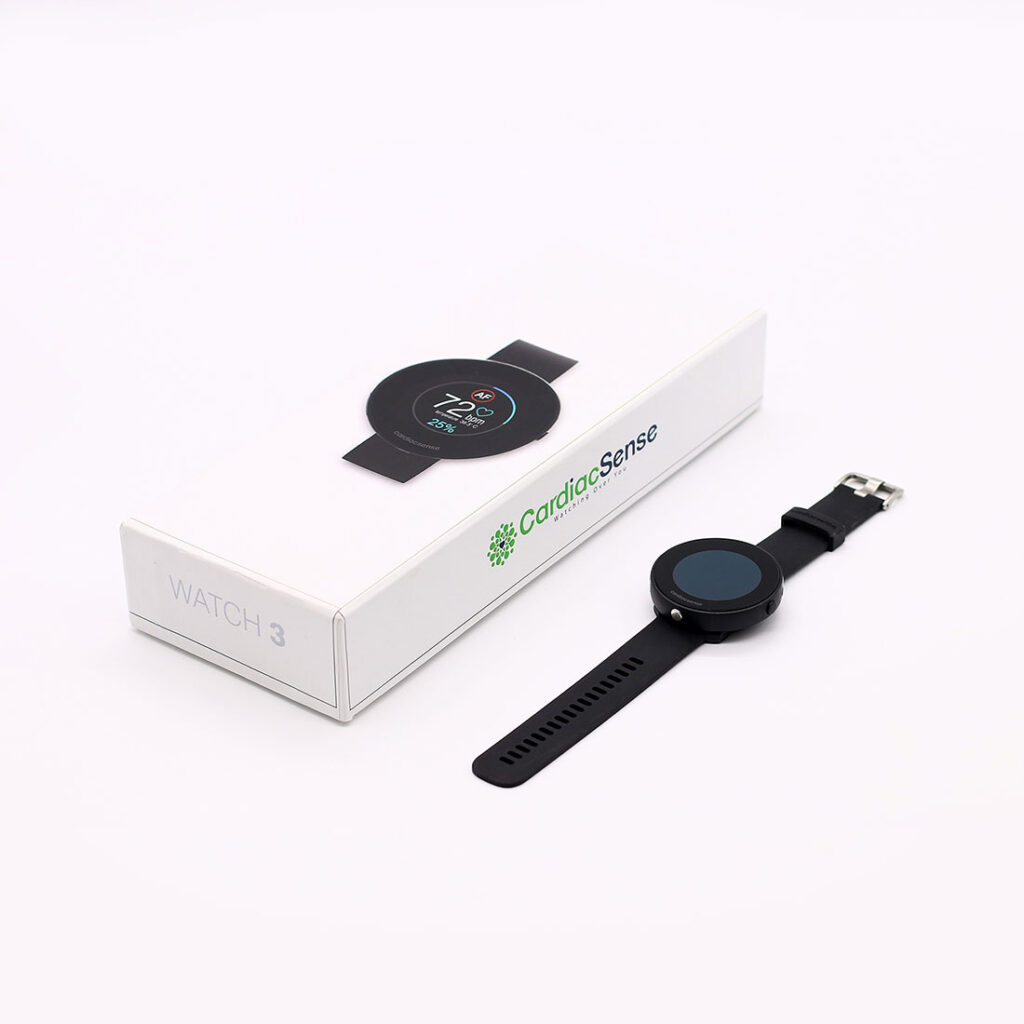Living in a fast-paced world linked to technology, the need for balance and well-being is more important than ever. Juggling the demands of daily life, people often look for ways to handle stress and adopt healthier habits. When it comes to wearable gadgets, the choice between a smartwatch and a smart ring has become a major decision. In this article, we will share insights into the advantages and disadvantages of both, drawing from professional practice and overall experiences.
The evolution of smart technology has significantly changed our lifestyles, and wearable devices are now everywhere. While smartwatches are well-known, there’s a rising star in wearable tech—the smart ring. But what makes a smart ring different, and how does it stand out from the more common smartwatch?
In a world where technology and well-being intersect more every day, making informed choices about our gadgets is a major step toward a balanced and healthier lifestyle. Join us in exploring wearable technology as we weigh the benefits of both smart rings and smartwatches.
Table of contents
What Are Smart Watches?
A smartwatch is a compact, wearable computer device shaped like a watch. Modern versions come with a touchscreen for daily use, while a connected smartphone app manages and tracks data, like long-term health monitoring. Early models handled basic tasks like calculations and digital timekeeping, but those released after 2015 offer broader functionality akin to smartphones. They include mobile apps, an operating system, and connectivity via WiFi/Bluetooth. Some also serve as portable media players, featuring FM radio and playing digital audio and video files through a Bluetooth headset. Certain models, known as watch phones, even have mobile cellular capabilities, allowing for telephone calls.
What Does a Smartwatch Do?
Smartwatches, whether designed for everyday use like the Apple Watch or specialized purposes like the Garmin Fenix, come with a set of standard features:
Smartwatches alert you to important events or activities. Some devices mirror your smartphone notifications, while others offer unique alerts. For instance, certain Apple Watches have a fall sensor that detects your movement after a fall, sending notifications. If unresponsive, it can even alert authorities on your behalf.
A smartwatch’s usefulness depends on the apps it supports. App availability varies based on whether it’s integrated with Apple’s or Google’s ecosystems. Specialized smartwatches, like those for hiking or diving, often come with purpose-specific apps.
Paired with smartphones, most smartwatches can control media playback. For example, if you’re using Apple’s AirPods with an iPhone, you can use your Apple Watch to adjust volume and tracks.
Smartwatches running watchOS or wearOS allow you to answer messages using voice dictation.
While dedicated fitness bands may suit hardcore athletes better, many smartwatches feature a heart rate monitor and pedometer for basic workout tracking.
Most smartwatches include GPS for location tracking and receiving location-specific alerts.
Modern smartwatches generally last a day with normal use, retaining some charge. Battery life varies; for instance, the Apple Watch typically lasts 18 hours on a single charge, while the Pebble can go for two or three days.
How Does a Smartwatch Work?
Smartwatches operate using various systems, like Apple’s watchOS, Google’s WearOS, or Samsung’s Tizen. These systems enable users to download apps, personalize watch faces, and perform different tasks.
With a small display, smartwatches have a user-friendly interface, utilizing gestures like swiping and tapping, along with physical buttons or a rotating dial for navigation.
Connectivity is key; while most rely on Bluetooth for pairing with smartphones, some have cellular or WiFi capabilities, allowing internet connectivity and standalone functions.
Notifications play a crucial role, alerting users to calls, messages, and other events. Some smartwatches even allow quick replies or actions directly from the watch.
Compatibility is important, as smartwatches are designed to work with specific smartphones, requiring particular operating systems or Bluetooth versions.
Charging is a regular task, with smartwatches having batteries that need recharging every day or two. Charging methods vary, including traditional cables or wireless options.
Apps enhance functionality, with many smartwatches offering access to various apps from app stores, covering games, productivity tools, and health tracking. Some smartwatches also come with built-in apps like music players or weather apps.
Customization is a highlight, allowing users to personalize watch faces, choose colors and styles, and decide which data is displayed on the watch face.
Pros and Cons
Smart watches offer both advantages and disadvantages worth considering:
Advantages
- Smartwatches offer a quick way to stay connected and organized without pulling out your phone. Check messages, calls, and your schedule right from your wrist
- Equipped with sensors, smartwatches monitor steps, heart rate, and other fitness metrics, helping you track and progress towards your health goals
- Smartwatches come in diverse designs, allowing you to customize watch faces and apps to match your personal style
- Some smartwatches include safety features like fall detection, alerting emergency contacts if you fall. GPS features can help locate your phone or guide you home if lost
- Beyond practicality, smartwatches offer entertainment options. Play games, listen to music, and watch videos for a fun and distracting experience
Disadvantages
- Smartwatches need regular charging, sometimes multiple times a day, posing inconvenience
- Not as powerful as smartphones, smartwatches may struggle with certain apps and features
- Particularly for children, smartwatches can be distracting, leading to a loss of track of time or surroundings
- Smartwatches collect personal information like location and contacts, raising privacy concerns and discomfort for some users
- Given their cost, smartwatches are susceptible to loss, theft, or hacking, necessitating caution and preparedness for unforeseen incidents
Popular Smartwatches
Here are some examples of smart watches:
Apple Watch 8
This smartwatch maintains its leadership position, seamlessly integrating with the Apple ecosystem. Known for its top-notch build quality, it offers a broad spectrum of features, including health and fitness tracking, along with access to a wide array of applications.

Galaxy Watch 6
Catering to Android users, the Galaxy Watch 6 is praised for its adaptability, stylish design, and an extensive set of features. These include health monitoring, smartphone notifications, and the convenience of contactless payments.

Fitbeat
With a primary focus on fitness and health, Fitbeat provides meticulous monitoring of activity, sleep quality, and various health parameters. It’s an excellent choice for those seeking an affordable device with a strong emphasis on well-being.

CardiacSense Watch 3
This watch specializes in monitoring heart rate and blood pressure, making it an ideal pick for users dealing with cardiovascular issues.

What are Smart Rings?
A smart ring is a tiny electronic gadget equipped with sensors and NFC chips, serving various purposes such as tracking daily activities and acting as an accessory for mobile devices. Smart rings offer a compact alternative to smartwatches and fitness bands, and their applications extend beyond just counting steps or acting as an extension for smartphones.
What Does a Smart Ring Do?
Smart rings offer various functionalities for users. One common use is in health and fitness, where they can monitor sleep patterns, and daily activities, and even provide recommendations based on personal circadian rhythms. Fitness tracking, measuring steps, distance, and calories burned, is another popular feature.
In the health and wellness category, some smart rings go beyond basic fitness tracking. They can monitor heart rate, blood oxygen levels, blood pressure, and even stress levels using electrodermal activity. The latter is the same technology used in lie detector tests.
A rising trend is the integration of contactless payments into smart rings. This allows users to make transactions by simply tapping their ring on compatible payment terminals, without the need for a smartphone or bank account details.
Online security is also becoming a focus for smart rings. Some devices use two-factor authentication for web log-ins, while others are exploring biometric authentication methods such as fingerprint scanning and facial recognition to enhance security.
Smart rings can also serve as a remote control for smartphones and other devices, enabling users to manage alarms, receive notifications, and control music without reaching for their screens.
For added security, there are smart rings that function as smart keys. These rings can open doors to homes, cars, or offices, offering a convenient and secure alternative to traditional keys or access cards.
On public transportation, certain NFC smart rings can serve as travel passes or tickets for tap-to-pay card reader terminals at transit gates. This eliminates the need for physical cards or connections to credit/debit accounts, providing a hassle-free experience for users.
How Does a Smart Ring Work?
Smart rings achieve their impressive functionalities through a combination of various technologies neatly packed into their small design. These include an NFC chip, sensors, a Bluetooth chip, a battery, a microcontroller, and a light indicator.
NFC, or near-field communication, is a wireless connection method that uses magnetic fields to enable communication between devices in close proximity. This technology ensures secure transactions and has been widely used in smartphones, laptops, transport cards, and digital wallets like Apple Pay and Google Pay.
Sensors play an important role in smart rings by tracking different parameters based on the desired functionalities. These sensors can include a heart monitor, an accelerometer for movement tracking, a gyroscope for balance detection, an EDA sensor for emotion and stress tracking, a SpO2 sensor for monitoring blood oxygen levels, a glucose sensor, and an NTC thermistor for body temperature tracking.
Bluetooth is essential for syncing the data collected by the smart ring’s sensors with a smartphone app. This connection allows smart ring brands to present user-friendly reports and recommendations. While some smart rings provide raw data recorded by sensors, more advanced ones analyze this data to offer personalized suggestions to users.
Pros and Cons
Smart rings offer both advantages and disadvantages worth considering:
Advantages
- While not as feature-rich as smartwatches, smart rings excel at continuous daily tracking. They may be a more comfortable choice for activities like sleep monitoring
- Smart rings consume less power since they lack screens, providing a longer battery life of 3 to 7 days compared to the 1 to 2 days typical for smartwatches and fitness bands
- Compact and lightweight, smart rings are comfortable to wear, especially for activities like contactless payments and fitness tracking, providing a frictionless and intuitive experience
- Smart rings, often elegantly designed with hypoallergenic materials, are discreet due to their small size. Some even offer replaceable metallic shells in various colors
- Smart rings have an edge in privacy as they lack features like loud speaking or large screens that could inadvertently reveal personal information to those around you
- While highly capable smart rings can be expensive, basic, functional ones are more budget-friendly
Disadvantages
- Compared to smartwatches, smart rings may have limitations, particularly if real-time metrics are crucial for your needs
- Some smart rings can be bulky, though companies often provide sizing kits to ensure the right fit. Be cautious about design aesthetics
- Highly capable smart rings, addressing design challenges, can be pricey
Popular Smart Rings
Here are some examples of smart rings:
Ultrahuman Ring Air
This smart ring stands out with advanced health monitoring features, including tracking heart rate, and stress levels, and analyzing sleep. Its sleek design has attracted users who appreciate both functionality and aesthetics.

Oura Ring
Known for its accuracy in tracking sleep and overall health, Oura Ring uses sophisticated algorithms to analyze sleep quality and provides detailed data on sleep phases. It’s a popular choice for those aiming to enhance sleep and overall well-being.

Femometer Ring
While not as widely recognized as Ultrahuman or Oura, Femometer caters to women’s unique health monitoring needs. It can track the menstrual cycle and offer recommendations based on physiological changes.

SleepOn Go2Sleep Ring
This smart ring focuses on sleep monitoring, providing users with detailed data on the quality of their sleep. SleepOn is suitable for those seeking to improve their sleep patterns and gain insights into the factors influencing them.

In 2024, the choice between smart rings and watches ultimately boils down to personal preferences and individual needs. If you prioritize elegance and specialized monitoring, a smart ring could be the perfect fit, offering discreet yet valuable insights into your health and activity. On the other hand, if you seek greater functionality and versatility, a smartwatch might be the way to go. Smartwatches provide a comprehensive package, serving as a fitness tracker, mobile device, and traditional watch, ensuring you stay connected and organized while enjoying a range of features. Whether it’s the sleek design of a smart ring or the multifunctionality of a smartwatch, the decision hinges on what aligns best with your lifestyle and preferences.
Share your preferences with us! Are you team smart ring or do you lean towards the versatile functionality of a smartwatch? Drop your choice in the comments below – we’d love to hear your thoughts!
